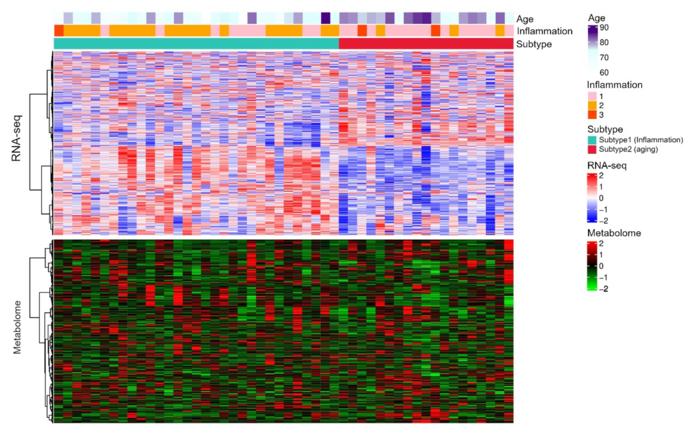Liver cancer, specifically hepatocellular carcinoma (HCC), represents a formidable challenge in modern oncology, frequently emerging on the backdrop of chronic liver disease (CLD). While viral infections have been historically recognized as significant contributors to liver carcinogenesis, non-viral factors are increasingly implicated in the rising incidence of HCC. Roughly 15 to 25 percent of HCC cases are linked with non-viral chronic liver conditions, underscoring an urgent need to elucidate the molecular underpinnings that bridge chronic liver dysfunction and tumor development. A transformative study from Hiroshima University and its associated institutions has leveraged multi-omics approaches to decode the molecular dysregulation underlying this critical transition, offering new avenues for chemopreventive strategies against HCC.
To dissect the molecular signatures differentiating healthy liver tissues from those affected by non-viral CLD adjacent to HCC lesions, the team employed RNA sequencing (RNA-seq) alongside metabolomic profiling. RNA-seq technology enables researchers to quantify gene expression by sequencing RNA transcripts comprehensively, thereby illuminating which genes are actively transcribed and their relative abundance. By contrasting transcriptomic data between normal and diseased tissue, the researchers identified differential gene expression patterns indicative of altered biological pathways potentially driving HCC pathogenesis.
Simultaneously, metabolomic analysis provided a complementary dimension, cataloging the small-molecule metabolites present within liver specimens. Metabolites reflect the biochemical activity and metabolic flux within cells, revealing perturbations that may not be evident at the gene expression level alone. By integrating transcriptomic and metabolomic data sets—a technique known as multi-omics—the investigators constructed a holistic molecular landscape characterizing the liver’s shift from health to disease, thereby pinpointing critical dysregulated pathways.
The study revealed two distinct molecular subtypes within the CLD category. Subtype 1 was hallmarked by heightened expression of inflammatory markers, signifying a microenvironment rich in pro-inflammatory signaling cascades. This subtype aligns with previous research highlighting chronic inflammation as a predisposing factor for oncogenic transformation within the liver. Conversely, Subtype 2 corresponded to an older patient cohort and was typified by perturbed lipid metabolism, including diminished fatty acid catabolism and increased fatty acid accumulation, coupled with notable metabolite deficiencies. These findings suggest an age-associated metabolic derangement contributing to hepatic carcinogenesis independent of inflammatory processes.
Of particular interest, both CLD subtypes exhibited suppression of genes associated with fatty acid metabolism, highlighting a fundamental metabolic imbalance in disease states. The fatty acid metabolic disruption observed in Subtype 2, alongside the inflammatory milieu of Subtype 1, illustrate diverse, yet convergent, molecular pathways fostering tumor progression. These insights emphasize the heterogeneity inherent in HCC development and challenge the notion of a one-size-fits-all therapeutic intervention.
Leveraging the knowledge of these molecular aberrations, the research team explored therapeutic modalities capable of mitigating the identified pathway dysregulations. One promising candidate is epigallocatechin gallate (EGCG), a potent antioxidant derived from green tea, previously demonstrated in murine models to attenuate expression of inflammatory pathways induced by high-fat diets mimicking non-alcoholic fatty liver disease. EGCG’s potential to reverse inflammatory signaling in Subtype 1 holds considerable promise for chemopreventive applications aimed at reducing HCC incidence within at-risk populations.
Despite these promising findings, the scientists acknowledge the necessity for rigorous clinical validation of therapeutic candidates such as EGCG. Future efforts must prioritize the development of precision medicine approaches tailored to the molecular signature of individual CLD subtypes. For instance, interventions eliminating inflammation may benefit patients classified under Subtype 1, whereas targeted replenishment of metabolite deficiencies could be more effective in the aging-associated Subtype 2 cohort. Such stratified therapy paradigms could revolutionize HCC prevention by addressing the root molecular causes rather than merely managing symptoms or late-stage disease.
This research not only advances our understanding of liver carcinogenesis at the molecular level but also exemplifies the power of multi-omics analysis in biomarker discovery and therapeutic target identification. By integrating transcriptomic and metabolomic data, the team has provided a refined molecular taxonomy of CLD-related HCC risk that will guide future experimental and clinical endeavors. The ability to characterize the disease landscape with such precision marks a significant stride toward curbing the global burden of liver cancer.
Moreover, the study highlights the critical role of meticulous analysis of non-cancerous tissue adjacent to tumors, illuminating the microenvironmental factors that may facilitate malignant transformation. Recognizing that the pathophysiology of liver cancer extends beyond overt tumor cells to encompass surrounding liver tissue invites broader investigative and therapeutic perspectives, opening new windows for early intervention in at-risk individuals.
The collaborative effort behind this study reflects a comprehensive institutional synergy, involving Hiroshima University’s Graduate School of Biomedical and Health Sciences, Hiroshima Prefectural Hospital, and Hiroshima University Hospital. Supported by funding from the Japan Agency for Medical Research and Development as well as the Japan Society for the Promotion of Science, the research epitomizes the intersection of cutting-edge science and clinical relevance.
In summary, the findings from this multi-omics investigation underscore a paradigm shift in understanding non-viral hepatocellular carcinoma development. Distinct inflammatory and metabolic dysregulations characterize different CLD subtypes, each potentially amenable to targeted chemopreventive strategies such as EGCG supplementation. This nuanced insight holds the key to developing bespoke therapies that could substantially reduce liver cancer incidences, ultimately improving patient outcomes globally. As the burden of chronic liver diseases grows with aging populations and lifestyle factors, such scientific advances will be pivotal in transforming the landscape of liver cancer prevention and care.
Subject of Research: Molecular mechanisms of liver dysregulation leading to nonviral-related hepatocellular carcinoma development
Article Title: Multiomics Analysis of Liver Molecular Dysregulation Leading to Nonviral-Related Hepatocellular Carcinoma Development
News Publication Date: 21-Feb-2025
Web References:
https://pubs.acs.org/doi/10.1021/acs.jproteome.4c00729
https://regeo.org:8443/details.jsp?gseId=GSE77964
References:
Nakahara, H., Ono, A., et al., “Multiomics Analysis of Liver Molecular Dysregulation Leading to Nonviral-Related Hepatocellular Carcinoma Development,” Journal of Proteome Research, 2025.
Image Credits: Atsushi Ono, Hiroshima University Hospital
Keywords: Hepatocellular carcinoma, Internal medicine, Gastroenterology, Liver, Metabolic disorders




